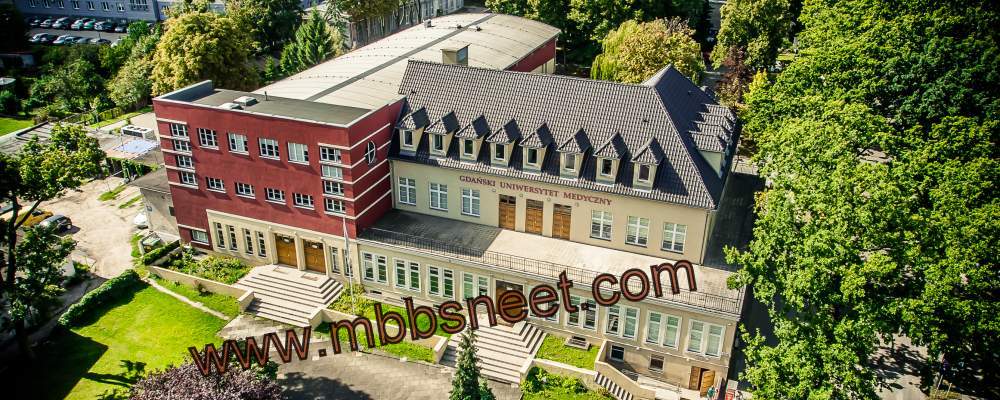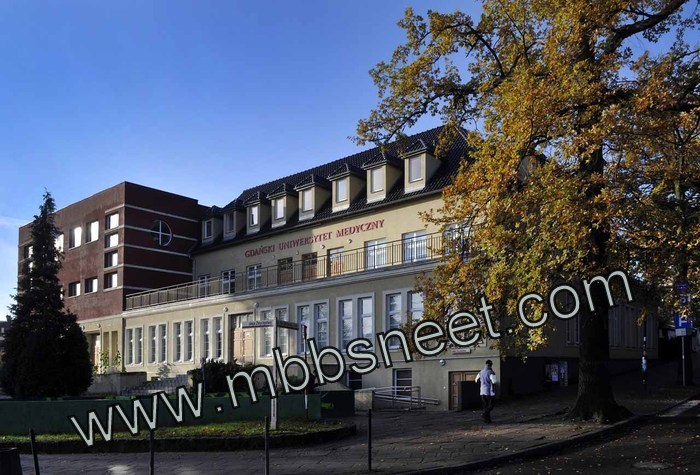The Medical Academy in Gdańsk was established on October 8, 1945. Its history is related to the centuries-old tradition of practicing medicine in Gdańsk by surgeons associated with the Surgeon’s Guild, which has been operating since 1454, as well as in medical and natural sciences, particularly in the Atheneum Gedanense founded in 1558. It created the chair of natural sciences and medicine (physices et medicinae), which was headed by outstanding experts of the subject. The most famous of them was Joachim Oelhafius, a native of Gdansk, who in 1613 was the first in Northern Europe to conduct a public section of the neonatal body and the anatomist and physician – Jan Adam Kulmus, an anatomist published in 1732, “Tabulae anatomicae”.
The work has been published many times and has been translated into many languages. The Academic Gymnasium presented a high level, and its graduates were admitted to the third year of medical studies at Western European universities. After the liquidation of the Academic Gymnasium at the beginning of the 19th century until the first years of the twentieth century, there was no academic school in Gdansk.
The traditions of the pharmaceutical sciences in Gdańsk date back to the times of Jan Placotomus, the author of wonderful books and the founder of the first Gdansk pharmacy in 1527 and Jan Schmiedt alias Fabritius, co-author of the oldest pharmacopoeia in Poland published in 1665.In 1935, the senate of Gdansk, already almost completely controlled by the German nationalists (members of the NSDAP), began the organization of the Academy of Practical Medicine (Die Staatliche Akademie für Praktische Medizin zu Danzig) on the basis of a municipal hospital built between 1907 and 1911. The teaching of medicine in a newly opened university included clinical subjects. In 1940, after the teaching of preclinical subjects, the name of the university was changed to Medizinische Akademie in Danzig, creating a full five-year study of medicine.Gdansk Medical University educates nearly 6000 students, postgraduates and postgraduate students. Among them there are nearly 800 foreign students.
The Faculty of Medicine was established in 1945. Two years later the Faculty of Dentistry was established. After their merger in 1950, the Faculty of Dentistry was established with the Department of Dentistry, which continues the centuries-old Gdańsk tradition of the natural sciences. The development of medical science has been formally since 1558, when the Gdańsk Gymnasium ( Gymnasium Academicum ) was established.
The Faculty of Medicine educates students on three faculties of study: medical (6-year unified master’s degree); dental and dental (5-year unified master’s degree) and dental technics (3-year undergraduate studies, undergraduate). The current structure of the Faculty is composed of 77 Departments, Offices and Clinics. The faculty’s teaching assignments are provided by 614 academic teachers, including 161 independent academic staff of which 52 hold the academic title of professor.
The Medical University of Gdańsk (MUG) offers an impressive range of high academic standard English-taught programmes including a Premedical Course, Polish and English Language Courses, Medicine Doctor Programme, Bachelor of Nursing Programme and a Ph.D. Programmes. The University is also known for its high standards in conducting scientific research, which is reflected in its high position in the Polish Ministry of Science and Higher Education rankings and by the many awards it has receieved for its staff. Moreover, its Faculty of Pharmacy with Subfaculty of Laboratory Medicine has recently been recognized by the Polish government as a Leading National Research Centre (KNOW).
The new hospital comprises several sections and houses 12 surgical departments, with bed space for 311 patients. The Invasive Medicine Centre’s teaching wing includes an auditorium with 288 seats and several seminar halls; whereas its roof has a helicopter landing pad connected directly to the Emergency Department.
The MUG student campus is situated on Dębowa Street, within walking distance of the main building – Collegium Biomedicum and the Main Library and other University buildings. Such a location helps students to arrive punctually at their classes. At the same time, the campus is located outside the busy and noisy city centre of Gdańsk.
The campus consists of four dormitories for 1000 students. Here are located the offices of the MUG Student Government and other student organizations as well as a large room available for meetings and training. All the dormitories are connected to the Internet.
Click here for (Real Information & Real Package) about MBBS in China, MBBS in Bangladesh, MBBS/MD in Georgia, MBBS/MD in Other Countries
MBBS Exit Exam/MCI Screening Test/NEXT/FMGE, NEET.PG, USMLE, PLAB
Call/Whatsapp Mr. Arun Bapna +91 90010 99110 for personalize counseling based on Entrance Exam Score, 12th Percentage, 12th Passing Year and Budget.




